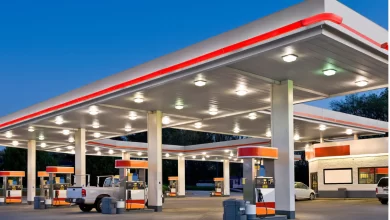Airflow dynamics play a crucial role in the operation of paint spray booths, impacting both the quality of the paint finish and the safety of the working environment. Proper management of airflow ensures that paint particles are effectively captured, overspray is minimized, and harmful fumes are removed from the booth. This blog explores the importance of airflow dynamics in paint spray booths and how they contribute to optimal performance.
Importance of Airflow in Paint Spray Booths
Airflow in a paint spray booth is essential for maintaining a clean and safe environment. It ensures that paint particles are properly directed towards the filtration system, preventing contamination and ensuring an even application of paint. Poor airflow can lead to issues such as overspray, uneven coating, and increased exposure to hazardous fumes.
A well-designed paint spray booth will have a balanced airflow system that provides consistent and controlled ventilation. This balance is achieved by carefully designing the intake and exhaust systems to create a steady flow of air through the booth, removing contaminants and providing fresh air for the operators.
Types of Airflow Systems
There are several types of airflow systems used in paint spray booths, each with its own advantages and applications. Understanding these systems helps in selecting the right configuration for specific painting needs.
Cross-Draft Airflow
Cross-draft airflow systems draw air from one side of the booth and exhaust it through the opposite side. This type of airflow creates a horizontal flow of air across the workpiece. Cross-draft systems are typically more affordable and easier to install, making them a popular choice for smaller operations and specific types of painting tasks.
However, cross-draft systems may not provide the same level of air cleanliness as other configurations, as they are more prone to overspray and contaminants settling on the workpiece.
Down-Draft Airflow
Down-draft airflow systems pull air from the ceiling and exhaust it through the floor. This vertical flow of air provides superior containment of overspray and contaminants, directing them away from the workpiece and towards the filtration system. Down-draft systems are ideal for high-quality finishes and applications where cleanliness is critical.
These systems are typically more expensive and require more complex installation, but they offer the highest level of performance and air cleanliness.
Semi-Down-Draft Airflow
Semi-down-draft airflow systems combine elements of both cross-draft and down-draft systems. Air is drawn in from the ceiling and exhausted through vents located at the lower sides of the booth. This creates a hybrid flow that offers improved containment of overspray compared to cross-draft systems while being more affordable than full down-draft setups.
Semi-down-draft systems provide a good balance of performance and cost, making them suitable for a wide range of applications.
Impact of Airflow Dynamics on Paint Quality
The dynamics of airflow within a paint spray booth directly affect the quality of the paint finish. Proper airflow ensures that paint particles are evenly distributed and applied to the workpiece. It also helps in removing overspray and contaminants, preventing defects such as runs, sags, and uneven coverage.
Consistent airflow also aids in the drying and curing process by maintaining stable environmental conditions within the booth. This consistency is crucial for achieving high-quality finishes, especially in applications requiring precise control over paint thickness and appearance.
Enhancing Safety Through Proper Airflow
Safety is a paramount concern in paint spray booth operations, and proper airflow dynamics play a significant role in enhancing safety. Effective ventilation removes harmful fumes and volatile organic compounds (VOCs) from the booth, reducing the risk of respiratory issues and exposure to toxic substances.
Proper airflow also minimizes the risk of fire and explosion by preventing the accumulation of flammable vapors. Explosion-proof ventilation systems and careful control of airflow help maintain a safe working environment for operators.
Considerations for Blast Booths
While the focus of this blog is on paint spray booths, it is important to note that similar principles of airflow dynamics apply to blast booths. Effective ventilation in blast booths is crucial for removing abrasive particles and dust, ensuring a clean and safe environment. When considering a blast booth for sale, evaluating the airflow system is essential for optimal performance and safety.
Choosing the Right Airflow System
Selecting the right airflow system for a paint spray booth depends on several factors, including the type of work, the quality of finish required, and budget considerations. Working with a blast booth manufacturing company can provide valuable insights into the best airflow configuration for specific needs.
Evaluating the specific requirements of the painting process, the size of the workpieces, and the desired level of air cleanliness will guide the selection of the appropriate airflow system. Investing in a well-designed airflow system ensures long-term benefits in terms of quality, safety, and operational efficiency.
Airflow dynamics are a critical component of paint spray booth performance. Proper management of airflow ensures high-quality finishes, enhances safety, and improves overall efficiency. By understanding the different types of airflow systems and their impact on operations, businesses can optimize their paint spray booths for superior results.





